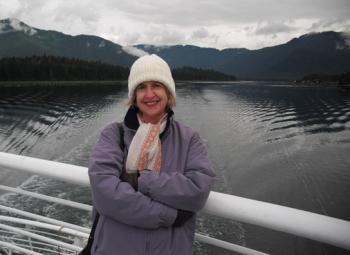Travelers’ Intercom USA
ITN is temporarily accepting brief write-ups about the US. Information on independent travel, cultural and traditional sites and sources of handmade crafts plus little-known natural wonders are welcome. Avoid touting commercial theme parks, casinos or highly publicized touristy sites.
Email editor@intltravelnews.com or write to Travelers’ Intercom USA, c/o ITN, 2116 28th St., Sacramento, CA 95818.
MEMORABLE SITES IN TENNESSEE
I’d like to present you with a couple of fascinating sites I visited in Tennessee in 2018. Both are fairly new, and both are startling but in different ways.
• In the tiny town of Whitwell, near Chattanooga in the southeastern portion of the state, is the Children’s Holocaust Memorial (Whitwell Middle School, 1 Butterfly Ln., Whitwell; www.whitwellmiddleschool.org/?PageName=bc&n=69256).
The idea for the memorial was born in 1998 when a student at Whitwell Middle School, who was learning about the Jews murdered in Germany in WWII, said he didn’t know what “6 million” meant. Students decided to make this number concrete by soliciting paper clips, hoping to amass 6 million of them.
The press publicized the project, and paper clips began pouring in from all over the world. The school stopped counting at 30 million. A rail car that had been used to transport Jews and others to concentration camps was donated to the school, and 11 million paper clips were placed inside of it, one for every Jew and others estimated killed by the Nazis.
• In northeastern Tennessee, 100 miles from Knoxville, is the Gray Fossil Site (Hands On! Discovery Center, 1212 Sunset Dr., Gray, TN; 423/434-4263, gfs.visithandson.org).
In 2000, while widening a road, workers began unearthing bones. The governor ordered the road moved, and nearby East Tennessee State University began a paleontological dig.
They determined that animals had gone there to drink water from what looked like a pond. It was, in fact, a sinkhole. They fell in and couldn’t escape.
Dozens of species have been found there, mostly mammals, some of which have never been seen before. The university estimates it will take 100 years to fully excavate the site.
The site is open 10 a.m.-5 p.m., Tuesday-Saturday. Admission costs $10 for adults and children ages 4 and older.
ROBYN RISHE
Los Angeles, CA
ALASKA MARINE HIGHWAY SYSTEM
While most tourists visiting Alaska’s Inside Passage sail on cruise ships, we chose “the road less traveled” from Juneau and, as independent travelers, explored the region on the Alaska Marine Highway System (AMHS) — Alaska’s public ferries — in June-July 2010.
These comfortable, reliable and spotless ships also visit remote villages that are inaccessible to huge cruise ships (e.g., within the Wrangell Narrows, with its dozens of “hairpin” turns).
Before leaving home, we called AMHS (800/642-0066, www.ferryalaska.com) and made ferry reservations for the entire itinerary. It was a good thing we did so because some of the ferries traveled only a few days a week.
We also made our lodging arrangements in advance, letting our motel hosts know when to pick us up at the port (once at 2:45 a.m.!).
We saw plenty of cruise ships, but we traveled like locals. Our longest voyage was a 10-hour sailing (7:45 a.m. to 6 p.m.) on M/V Matanuska from Petersburg to Ketchikan. Having no car, we were walk-on passengers, and it cost us $60 each, the ship’s lowest fare. (We did not book sleeping accommodations on board.)
Aboard each ferry, we enjoyed stimulating lectures by a US Forest Service naturalist, who pointed to dolphins, eagles and huge bears as well as glaciers and landmarks.
During the voyage, we dined on the catch of the day (such as Alaskan halibut for about $20 per person), marveling at pristine vistas from our table.
This was a unique way to experience the “real” Alaska!
MARVIN & CAROLE FELDMAN
Jacksonville, FL


